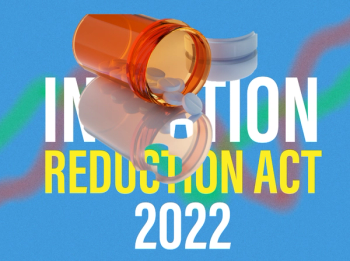
Study: Patients combine toxic medications with ‘alarming frequency’
A new study uses population health analytics to identify potential opioid abuse, and the study findings are troubling.
The number of people combining toxic drugs is more than most physicians realize, according to a recent study comparing laboratory data to patient-reported data. Quest Diagnostics looked at de-identified clinical laboratory data from patients prescribed at least one drug and whose physicians requested drug monitoring. The study used population health data from patients in 48 states, with the findings divided into several data groups including gender, age, geographic location and type of payer.
The concurrent use of opioids and benzodiazepine drugs, with one being prescribed and one not being prescribed, often signals potentially lethal drug use without clinical oversight, according to
The study found that 25% of patients monitored for drug use used both opioids and benzodiazepines at the same time. For 52% of those patients using both drugs, one of the drugs being used was not prescribed. Of those found using both drugs, nearly 20% of those prescribed to use opioids were also using non-prescribed benzodiazepines, and more than 15% of those prescribed to use benzodiazepines were using non-prescribed opioids.
Concurrent drug use of opioids and benzodiazepines was found in 11.2% of all test results, though only 9.6% of patients reported being prescribed both drugs. Stefan Kertesz, MD, an addiction medicine specialist at University of Alabama, says that urine drug tests can frequently diverge from what clinicians expect.
“Before concluding that most patients fail to take opioids and benzodiazepines correctly, we should take into account that urine tests sent to national laboratories reflect a skewed subset of patients who receive prescriptions,” says Kertesz, who reviewed the study. “Additionally, laboratory requisitions prepared by office staff are not likely to perfectly reflect what is prescribed. Urine tests convey a signal requiring interpretation followed by careful, patient-centered decisions.”
The study also found that 28.3% of women prescribed one of the drugs were found to be using the potentially deadly drug combination compared to 22.2% of men. Also, Medicare patients prescribed one of the drugs used the concurrent drugs significantly more than those with commercial or private payer health insurance.
A more common problem than anticipated
The finding from the study far exceeded the previous estimates of concurrent use of opioids and benzodiazepines, says F. Leland McClure, PhD, MSci, F-ABFT, director and medical science liaison of medical affairs at Quest Diagnostics, and lead author of the study.
“These patients are very vulnerable to the dangers of accidental drug overdose from misuse and drug combining. It seems clear that concurrent prescribing is only a part of the concurrent use problem facing the United States,” McClure says. “Opioid prescribing guidelines issued by the CDC advocate for drug testing patients prescribed opioids and limiting benzodiazepines to ensure they are not taking both drugs simultaneously. Careful vigilance by prescribing physicians may help to offset some of the risk posed by patients who may be misusing these substances and other prescription medications.”
McClure says that study is the first of its kind, as the healthcare community continues to seek solutions for a growing opioid abuse epidemic. A
“Expansion of electronic Prescription Drug Monitoring Programs in many states has greatly improved clinicians’ ability to identify all prescription information for their patients in real-time,” McClure says. “Unfortunately, these programs cannot capture non-prescribed drug use. Clinicians should be aware of potentially dangerous drug interactions beyond the prescription level, and our data demonstrate these interactions are happening with alarming frequency. Insights gained through drug testing can inform healthcare providers, affect treatment strategies, and save lives.”
Newsletter
Get the latest industry news, event updates, and more from Managed healthcare Executive.





















































